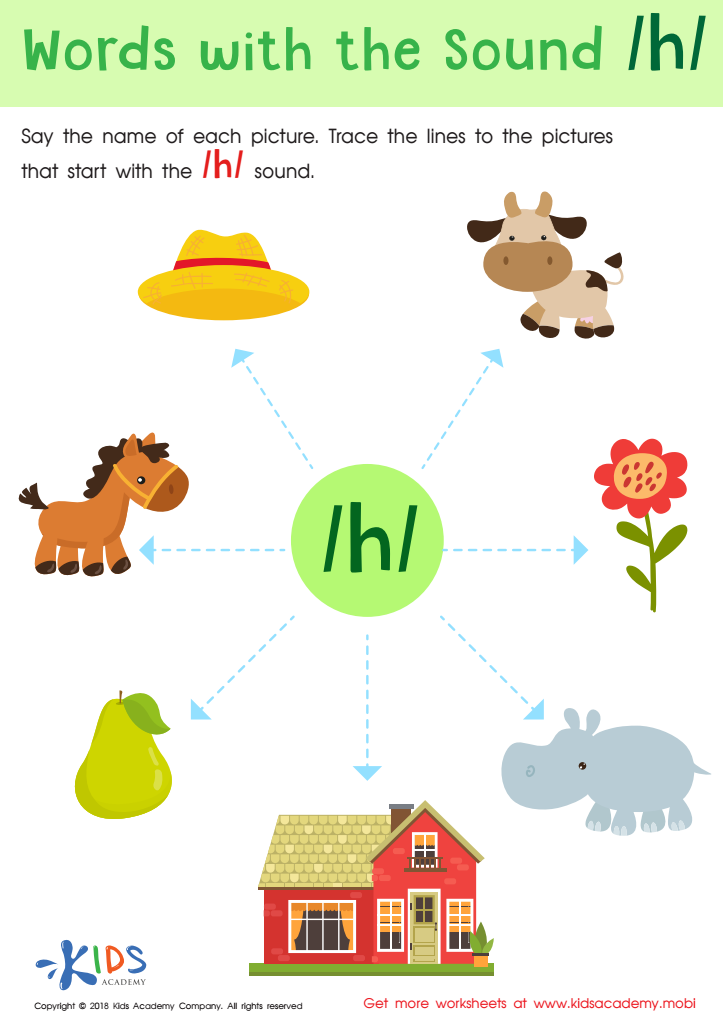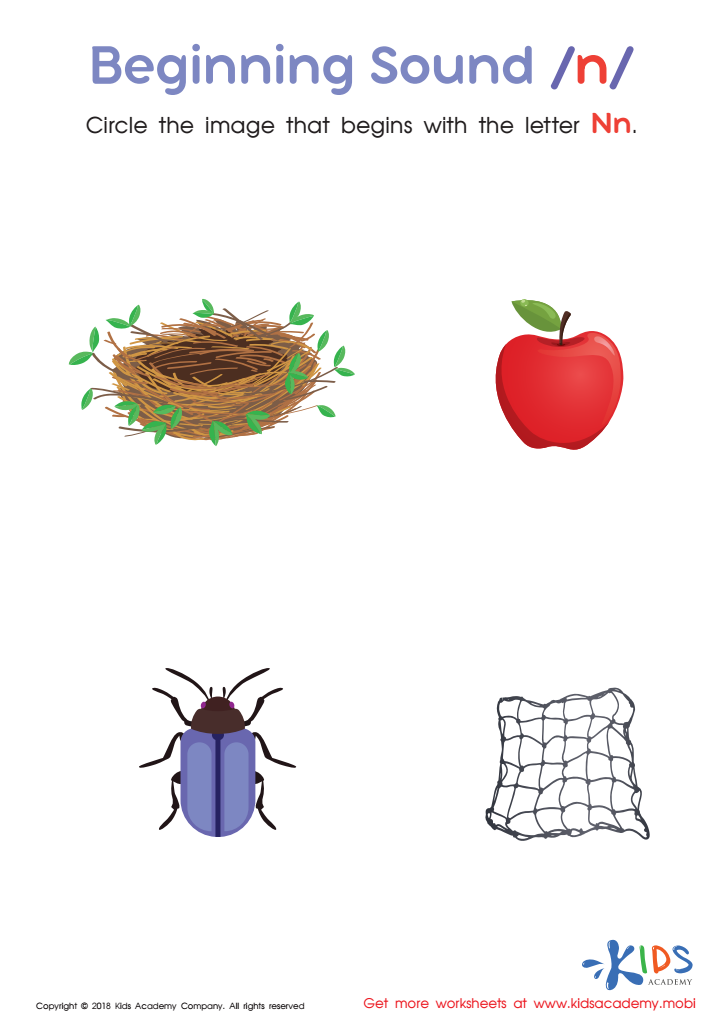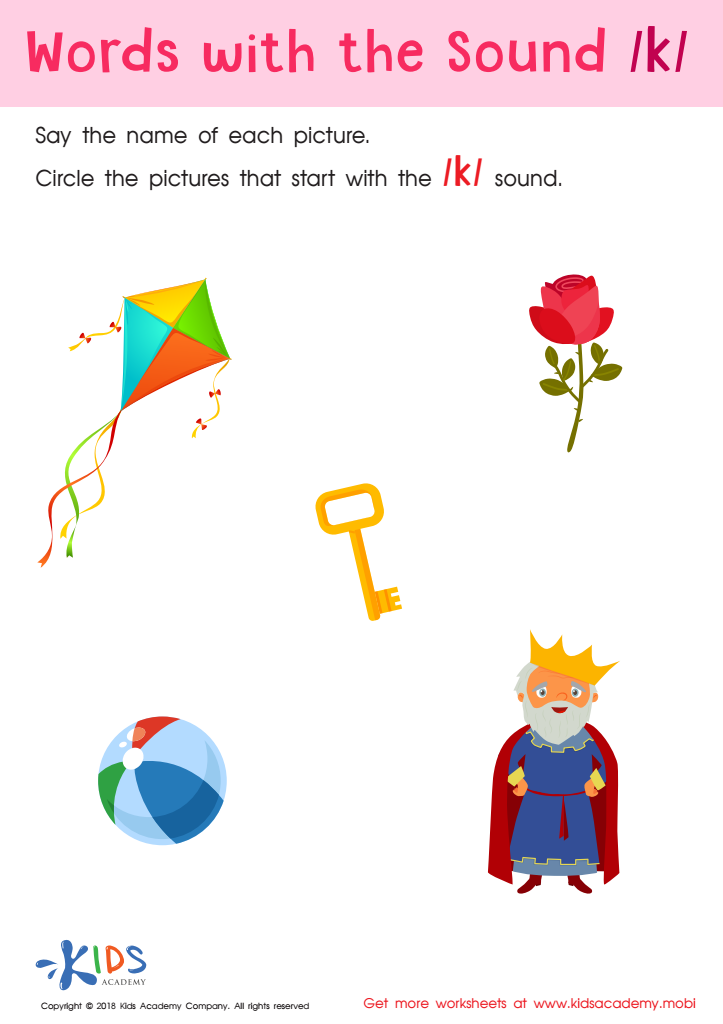Phonics Skills Normal Beginning Sounds Worksheets for Ages 6-9
3 filtered results
-
From - To
Discover our engaging "Phonics Skills Normal Beginning Sounds Worksheets" designed specifically for children ages 6-9. These worksheets help young learners develop essential phonetic awareness by focusing on the sounds at the start of words. Each activity is crafted to reinforce vowel and consonant recognition, fostering confidence in reading and pronunciation. Perfect for classroom use or at-home practice, our worksheets incorporate fun visuals and interactive exercises that keep students entertained while they learn. Elevate your child’s literacy skills with these thoughtfully designed resources that make phonics exciting and accessible. Start your journey toward fluent reading today!


Words with sound h Reading Worksheet


Beginning Sound «n» Worksheet


Words with sound k Reading Worksheet
Phonics skills, particularly Normal Beginning Sounds, are foundational for reading development in children aged 6-9. At this critical age, children are transitioning from learning to read to reading to learn. Mastery of beginning sounds aids in phonemic awareness, which is the ability to recognize and manipulate the sounds in spoken language. This skill supports children's ability to decode words and improve their pronunciation.
Understanding phonics helps children make connections between letters and sounds, thereby enhancing their reading fluency and comprehension. When children grasp the concept of beginning sounds, they can more easily predict unfamiliar words, building their confidence in reading. Moreover, these skills amplify vocabulary development as children learn to identify and articulate sounds associated with different letters or combinations.
Parents and teachers play a crucial role in this learning process. They can foster a supportive environment through engaging activities like phonics games, storytelling, and rhymes. By reinforcing these skills, adults not only boost reading proficiency but also encourage a lifelong love of reading. Ultimately, prioritizing Normal Beginning Sounds aids in developing critical literacy skills that are essential for success in academic pursuits and beyond. Investing in these abilities shapes informed and articulate future learners.
 Assign to My Students
Assign to My Students














